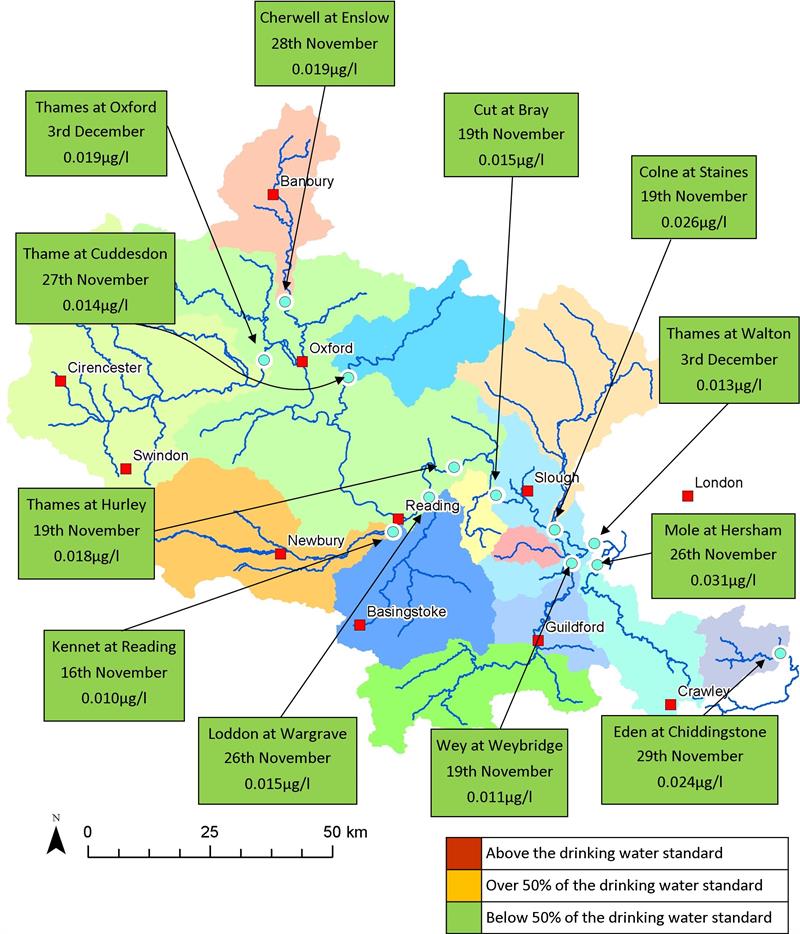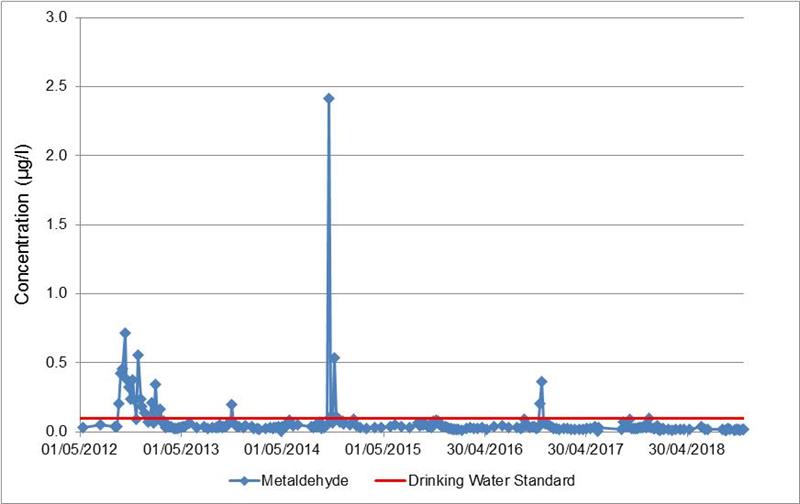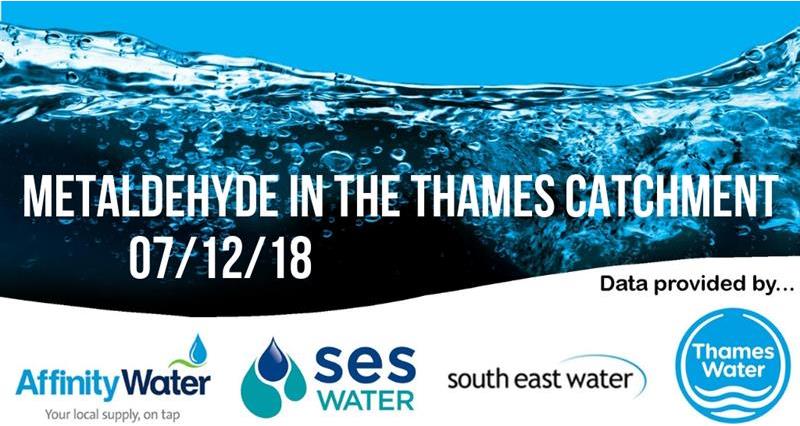Metaldehyde in the catchment
This autumn consider reducing reliance on chemical control measures by adopting a wider range of options in your Integrated Pest Management (IPM) programme to control slug numbers. If you need to use chemical control, please consider the use of ferric phosphate pellets instead of metaldehyde pellets and, as always, follow best practice guidelines. In some areas there are water company funded initiatives available to support you, so contact your local water company to find out more. Please note that contact details can be found at the bottom of this update.
Please see the map and graph below for 12 monitoring locations within the Thames catchment.
Latest Results
The latest metaldehyde results show that concentrations have remained below the drinking water standard at all 12 sites this week. Significant rainfall over the last week has meant that many field drains are now flowing and soils have reached saturation in a few areas of the catchment, increasing the likelihood of surface runoff. If you need to make any further slug pellet applications in the coming weeks please consider water protection and do not apply metaldehyde based pellets if heavy rain is forecast or field drains are flowing, and as always, follow pest practice guidelines (www.getpelletwise.co.uk).

Focus on… Cut at Bray
The Cut joins the Thames east of the village of Bray, Berkshire. Metaldehyde concentrations have exceeded the drinking water standard almost every year since monitoring began in 2012, with a maximum concentration of 2.41µg/l recorded in autumn 2014, almost 25 times the drinking water standard. In autumn 2017 and so far this season concentrations have remained below the 0.1µg/l standard.

To find out more please contact:
Affinity Water: Q2F0Y2htZW50TWFuYWdlbWVudEBhZmZpbml0eXdhdGVyLmNvLnVr, SES Water: Y2F0Y2htZW50QHNlc3dhdGVyLmNvLnVr, South East Water: Y2F0Y2htZW50QHNvdXRoZWFzdHdhdGVyLmNvLnVr or Thames Water: Y2F0Y2htZW50Lm1hbmFnZW1lbnRAdGhhbWVzd2F0ZXIuY28udWs=
